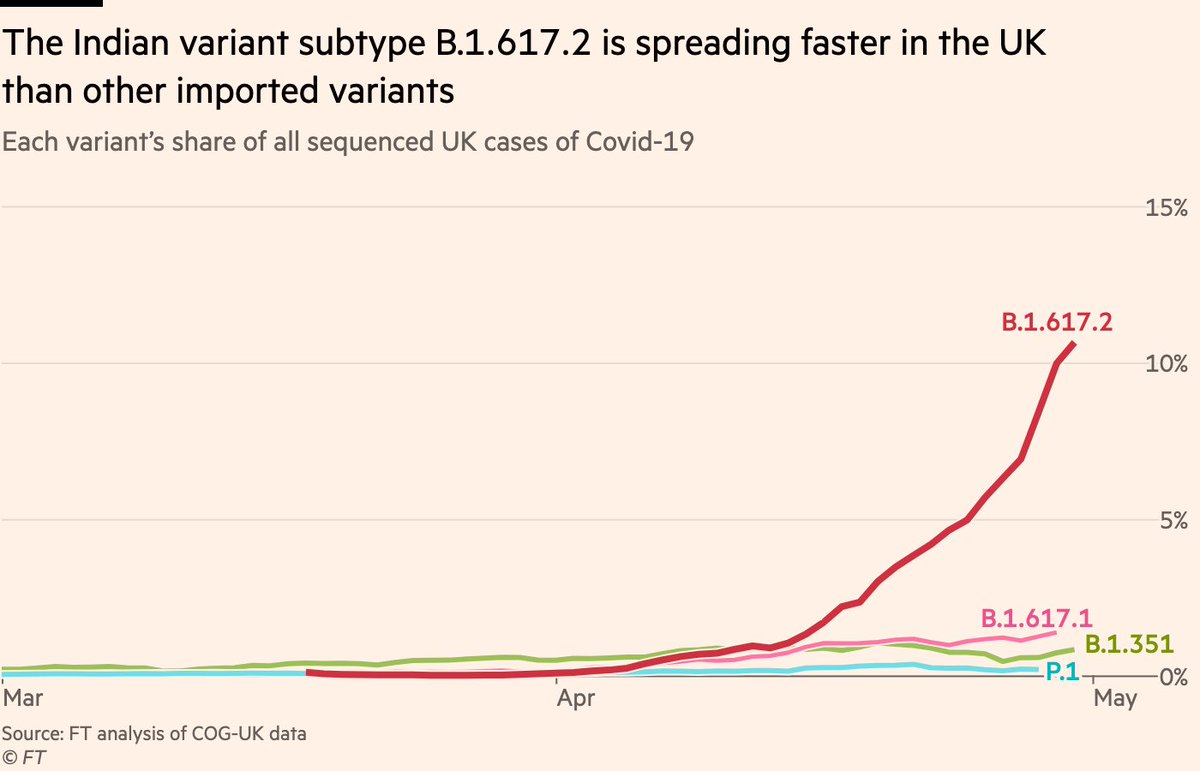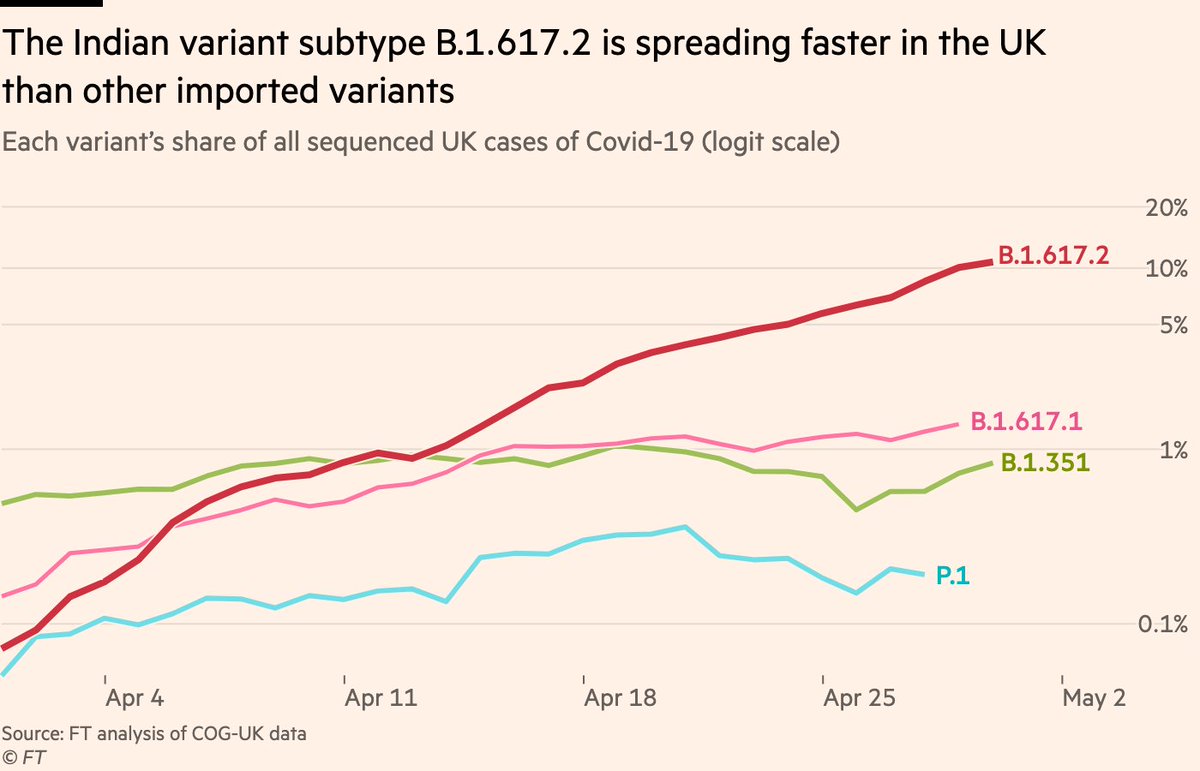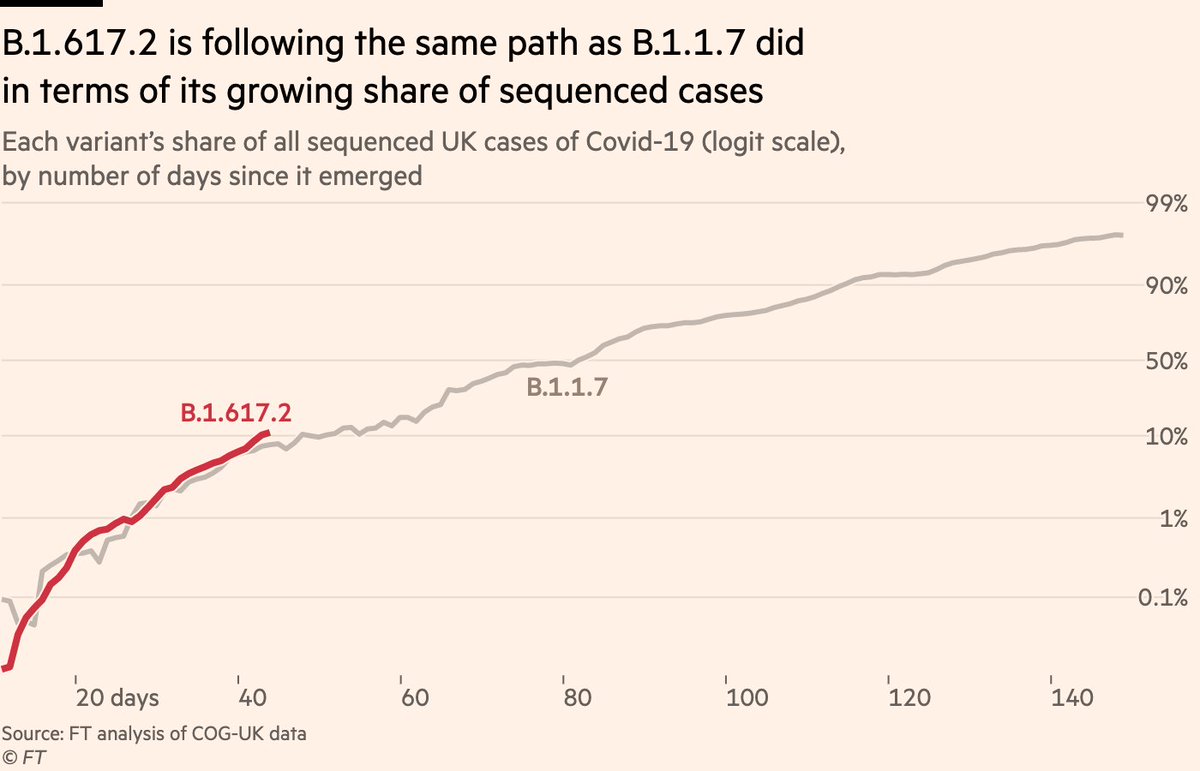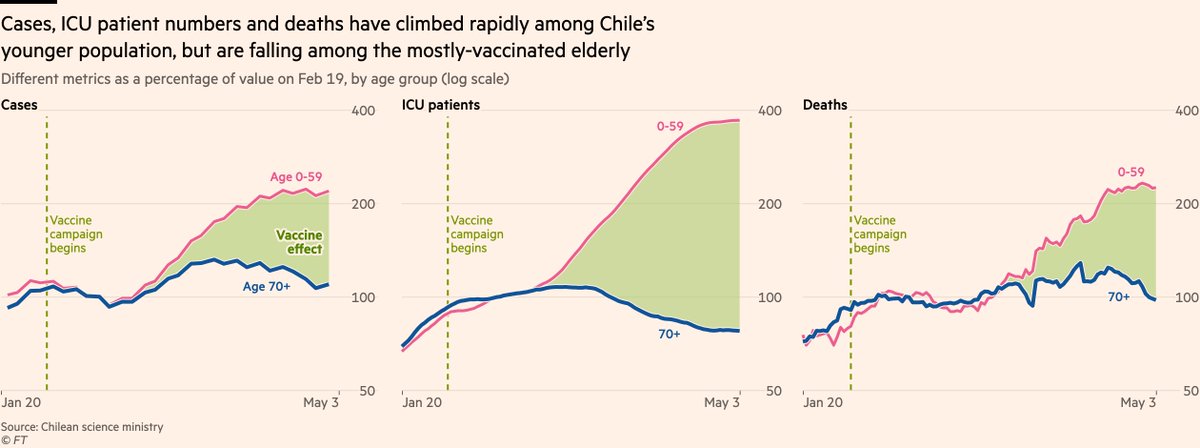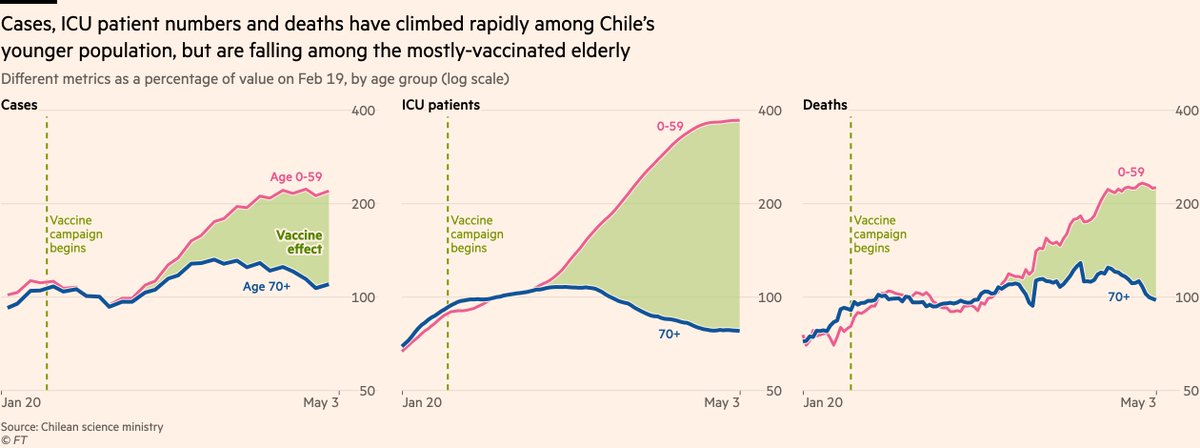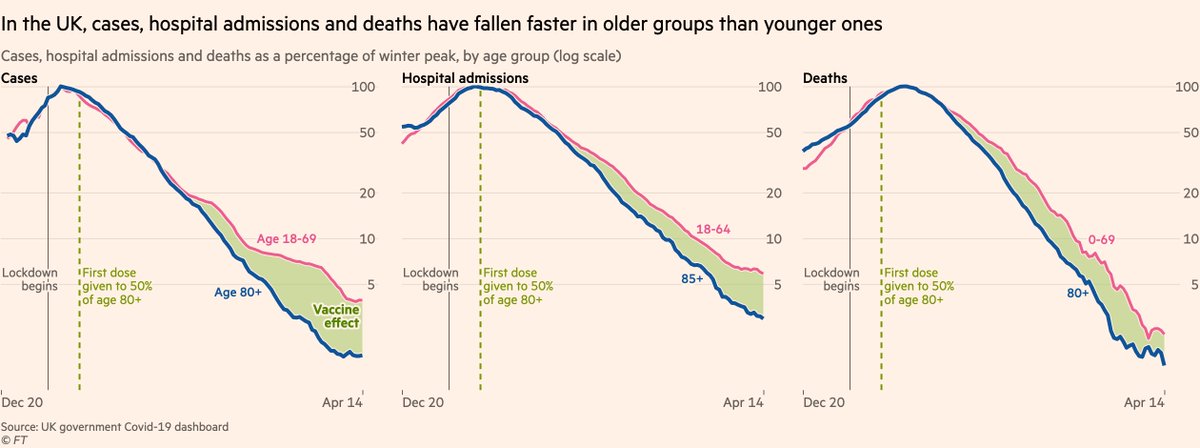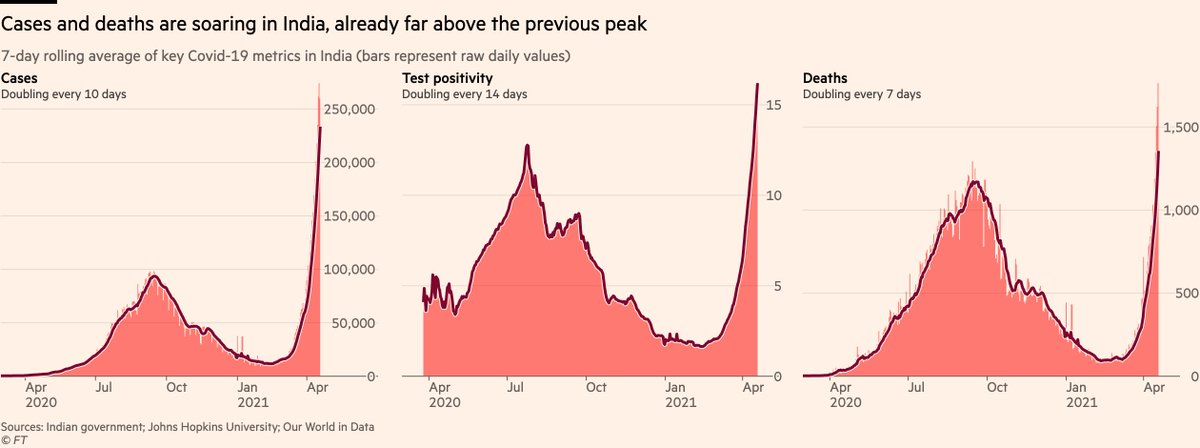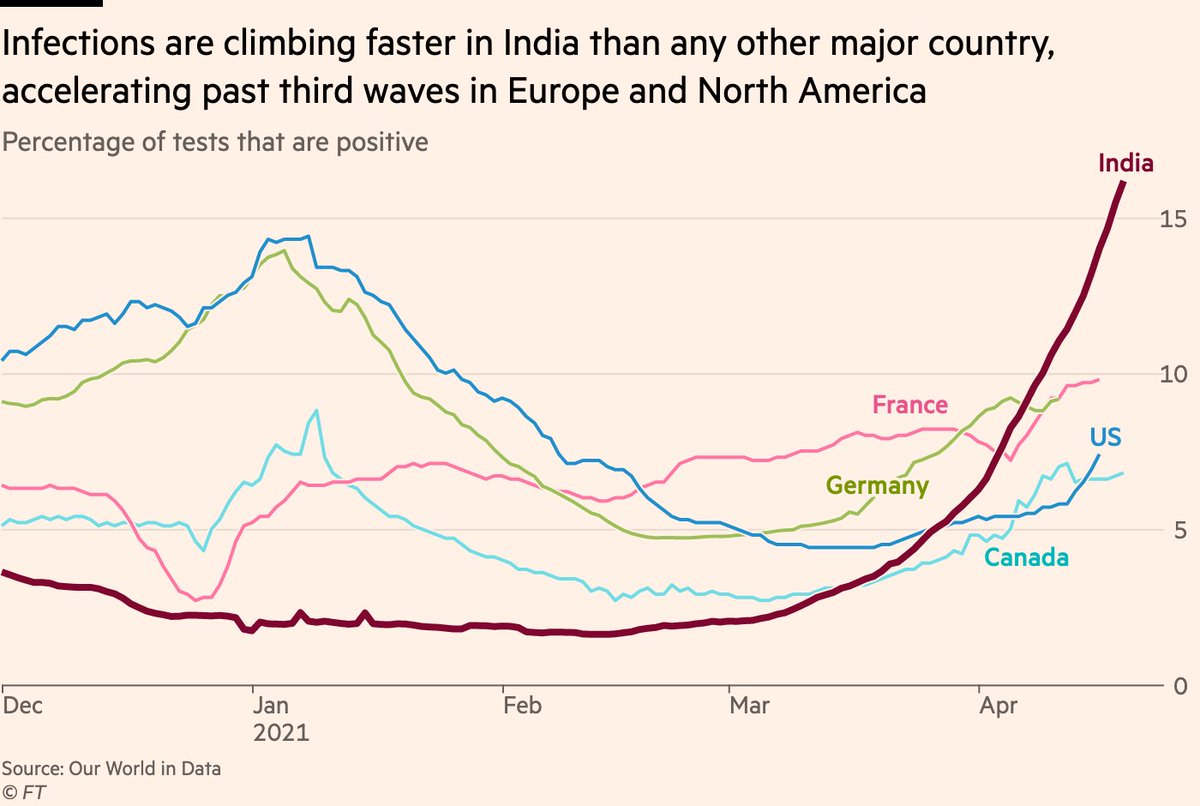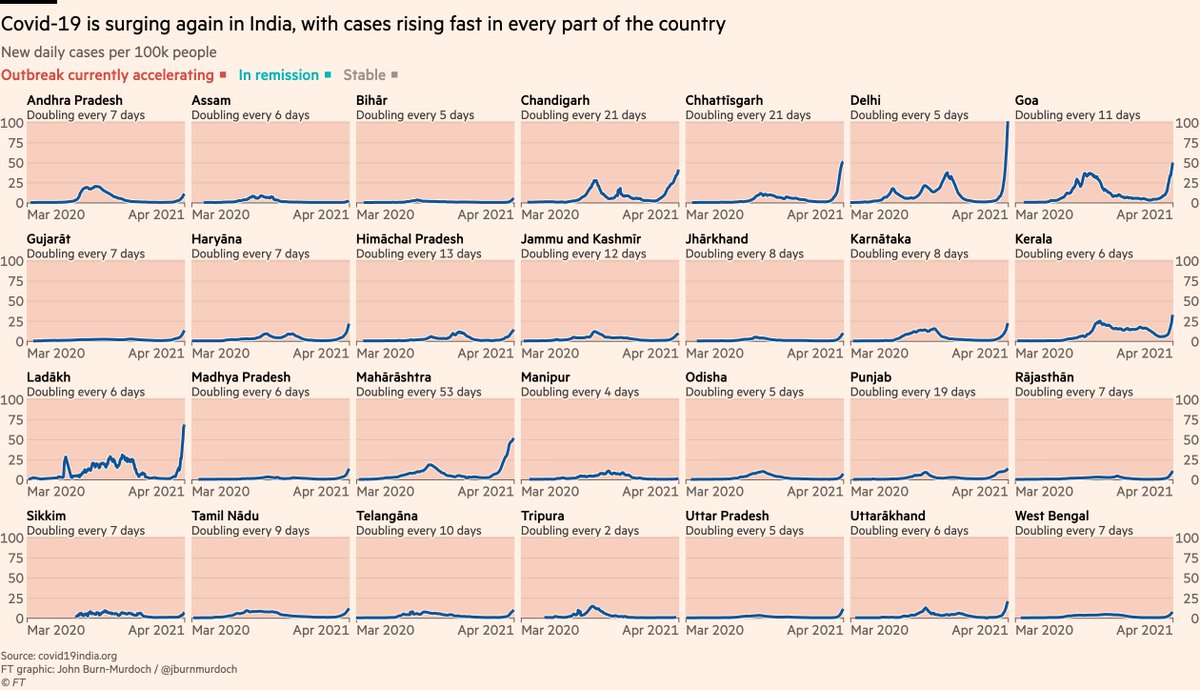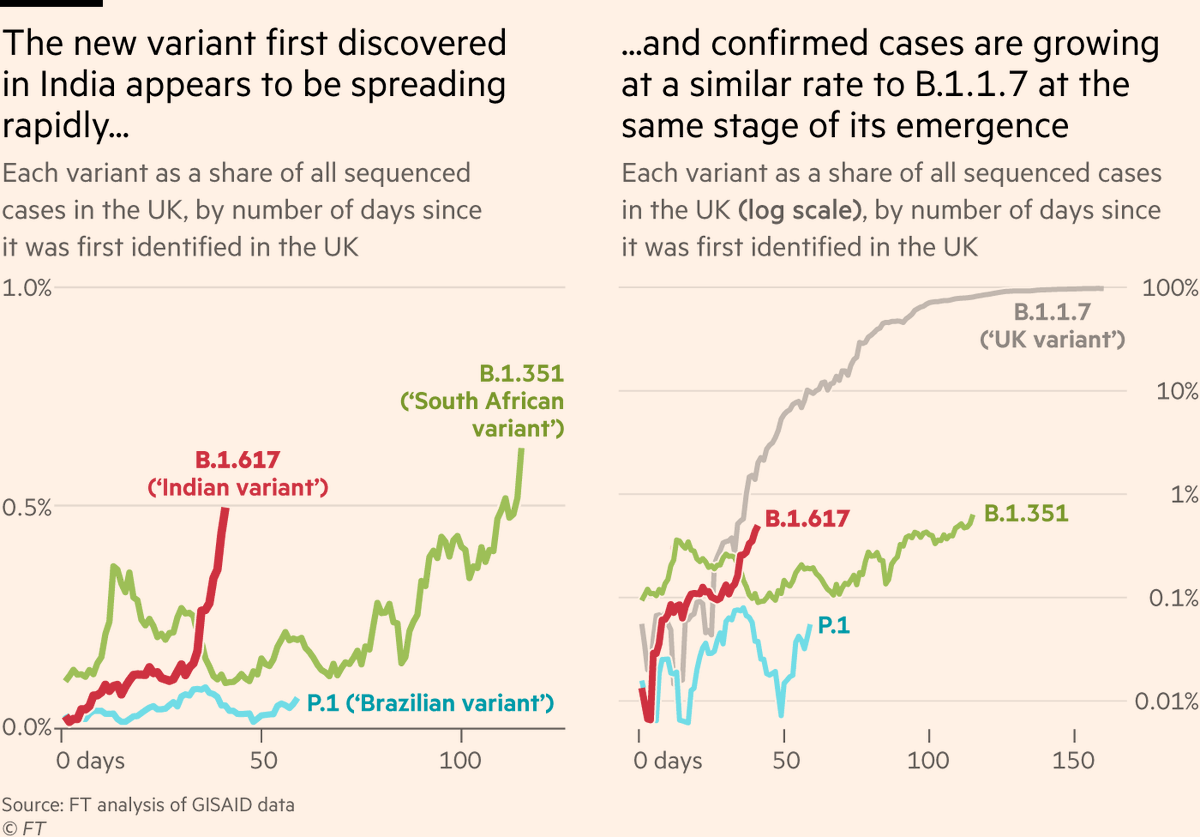
Quick mini-thread on the Seychelles:
There has been a surge in cases in the last few days, but as we’ve often seen lately, when you dig beneath the surface this is consistent with the vaccines working as advertised.
There has been a surge in cases in the last few days, but as we’ve often seen lately, when you dig beneath the surface this is consistent with the vaccines working as advertised.
• More than half of people in the Seychelles are fully vaccinated. The rest are mostly unvaccinated (very few with just one dose)
• But only one-third of active cases there have been vaccinated
• But only one-third of active cases there have been vaccinated
• So that means the unvaccinated are roughly twice as likely as the vaccinated to have been infected, which is completely in-line with the 50% efficacy reported for Sinovac (the main vaccine in use in the Seychelles)
• Good news is, those same Sinovac trials found 84% efficacy at preventing cases that went on to require medical intervention, and for preventing severe Covid efficacy was even higher
• So among the ~333 cases who’ve had both doses, the vaccine should keep most out of hospital
• So among the ~333 cases who’ve had both doses, the vaccine should keep most out of hospital
All of which is to say:
• Yes, the virus can still come back even where most have been vaxxed
• But it comes back stronger among those who haven’t
• High-efficacy vaccines work even better in this regard
• But even Sinovac still offers good protection against severe disease
• Yes, the virus can still come back even where most have been vaxxed
• But it comes back stronger among those who haven’t
• High-efficacy vaccines work even better in this regard
• But even Sinovac still offers good protection against severe disease
*edit: Sinopharm, not Sinovac
• • •
Missing some Tweet in this thread? You can try to
force a refresh


